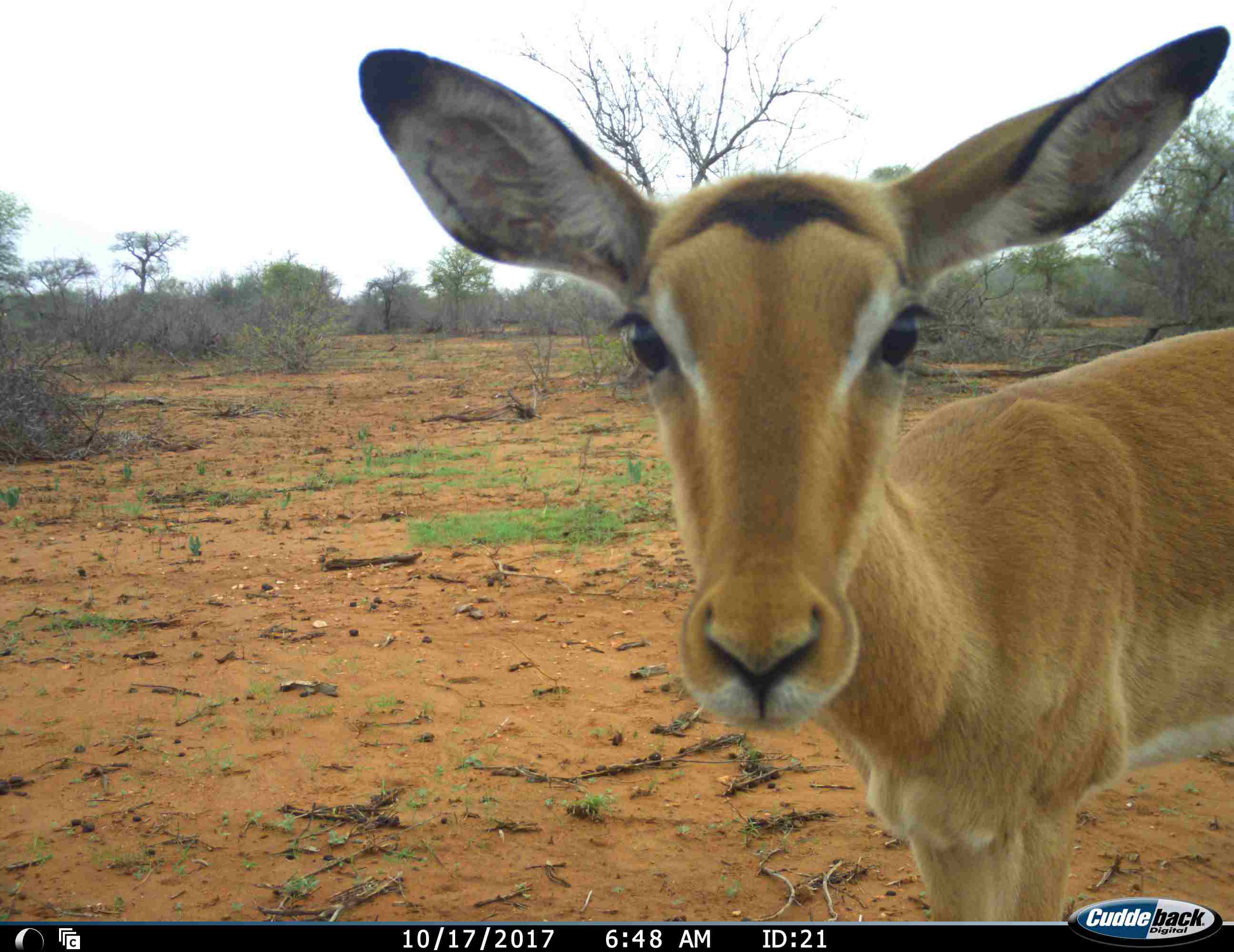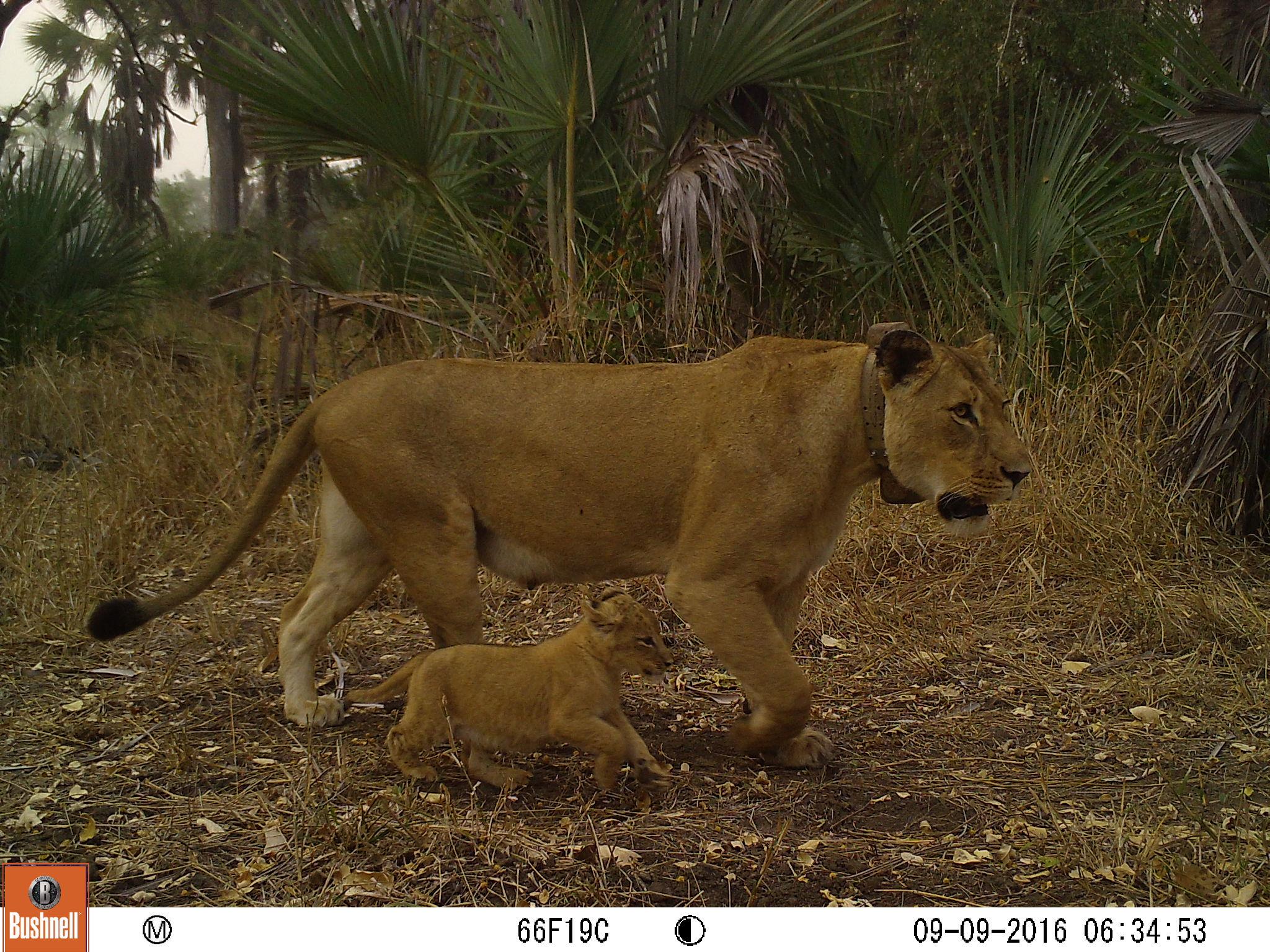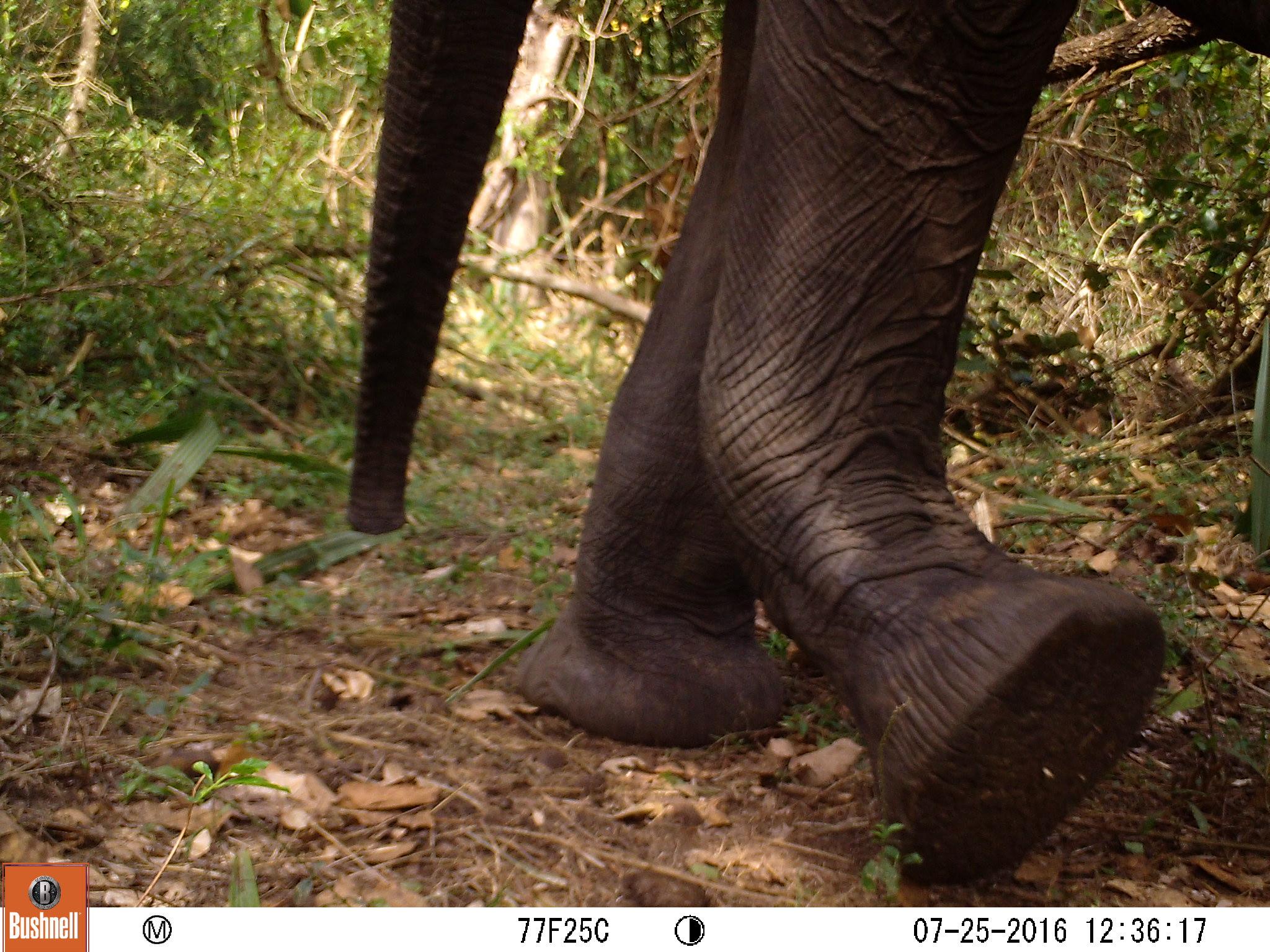
Climate change looms over the planet, causing unprecedented extinction rates and degradation. This is especially true for large mammals who have been pushed into ever smaller areas because of human expansion and are becoming less compatible with their environments as the planet warms. Some large African mammals are shifting northward or moving up mountains while trying to stay within their own evolutionary ranges.
Conservationists are working to help these mammals survive and thrive, but in order to assess the efficacy of their efforts, they need the kind of big picture data that comes from large-scale monitoring programs, which can provide insights in population trends over vast distances and help identify factors associated with altering population dynamics. This kind of monitoring can also detect the increase of potentially invasive species and track the trends of common species which, in some regions, are declining even more rapidly than rare species.
Credit: Snapshot Safari/Zooniverse
Most places don’t have baseline data that can be used for comparisons as Earth warms and wild populations are increasingly stressed by environmental conditions caused by humans. Gathering this kind of data requires standardized, reliable, and effective technical infrastructure and hours of labor from a dedicated workforce, which is the idea behind Snapshot Safari, created by Sarah Huebner, a researcher at the University of Minnesota Lion Center.
“We're trying to build a new model of collaboration and inclusion in which ecologists, wildlife managers, citizen scientists, data scientists, local community members, and other conservationists work together to conserve and restore African mammals,” said Huebner.
From Snapshot Serengeti to Snapshot Safari
Huebner was a graduate student when she first joined the Lion Center, working with the center’s founder Craig Packer, who had already launched a program called Snapshot Serengeti to monitor animals in Serengeti National Park. Huebner, with Packer’s encouragement, was interested in trying to expand his program and collect data from four or five other national parks.
“We were very successful in recruitment,” said Huebner. “We very quickly went from one grid of cameras all the way up to more than 50 now.”
Credit: Snapshot Safari/Zooniverse
Snapshot Safari works thanks to camera traps, a holdover term from the days when conservationists had to literally trap animals to study them. Now, however, researchers can rely on camera “traps,” motion-activated and heat-activated battery-operated cameras that, when activated, take three pictures, often capturing a wild animal. This method allows for the collection of data for the entire wildlife community all day long through all seasons.
“We have about 2,000 cameras out in the field across these different sites, and we’re generating around three million images a year,” Huebner said. “We get a lot of great data. But we’re a fairly small research team. That’s where citizen science comes in.”
Calling all Citizen Scientists
Snapshot Safari is hosted on Zooniverse, the world’s largest and most popular platform for people-powered research. More than a million volunteers currently lend their time, passion, and expertise to Zooniverse, including Snapshot Safari, where they help researchers extract a lot of data by providing details about the animals captured on camera. This crowdsourced data allows researchers to more quickly understand the current state of different species.
“Involving volunteers has been really rewarding because we’ve been able to connect with some people who are very passionate about biology,” said Huebner. “We’ve had volunteers who’ve spotted unusual things, like leopards or hyenas outside of their known ranges or animals moving northward and behaving in ways that we don’t expect to see.”
 Credit: Snapshot Safari/Zooniverse
Credit: Snapshot Safari/Zooniverse
Over 20 Million Images to Date
Snapshot Safari has been running continuously for five years and captured over 20 million images to date showing the presence, distribution, diversity, and activity patterns of approximately 85 medium to large-sized mammals in six African nations. Thanks to the diligent work of the citizen scientists, these images are well-labeled and the data they provide have been used by researchers in numerous studies, exploring topics such as predator coexistence or the distribution of various species of mongooses in South Africa.
This data is also significant for conservation managers who previously received numbers once a year in an annual game count. They can use the data to see if animals are successfully reproducing and, if not, they can make adjustments, such as providing additional resources like food for certain species.
One ongoing effort focuses on Mozambique’s Gorongosa National Park, which lost 90 percent of its large mammal populations during a civil war. This park is now striving for ecological rebirth through a large-scale conservation and restoration initiative. Snapshot Safari is providing these scientists with constantly updated feedback on their efforts.
 Credit: Snapshot Safari/Zooniverse
Credit: Snapshot Safari/Zooniverse
This work also advances machine learning as images, thoroughly labeled by volunteers, are used for training artificial intelligence. These data sets are included in an open access digital library Huebner co-founded called the Labeled Information Library of Alexandria so they can be used for further machine learning.
Ongoing and Evolving Research Program
“Snapshot Safari is an ongoing research program, and we fully intend to keep the cameras running as long as possible,” said Huebner.
Future cameras will include additional features, such as sensors that can hear animals that may be too shy to go in front of the cameras or weather sensors that can provide a fuller picture of what’s happening. Huebner and her colleagues are also working on pioneering a new type of project in which volunteers trace elephants’ ears to help identify individual elephants so that researchers can follow individuals throughout their lives. These traces will be fed to a machine learning model to train it to recognize and tag the same elephant in future images.
“The human-in-the-loop strategy we're employing at Zooniverse combines machine learning and volunteer effort in a variety of workflows to maximize both efficiency and accuracy in producing high-quality, research-ready data.”
About the Researcher
Sarah Huebner holds a PhD in Wildlife Ecology and Management from the Conservation Sciences Graduate Program at the University of Minnesota. Her research interests include long-term monitoring to safeguard African ecosystems, species, and genetic diversity; practical aspects of restoration ecology and repairing degraded ecosystems; cascading effects of reintroducing extirpated species; and citizen science and machine learning for processing big data and involving the public in meaningful research experiences.